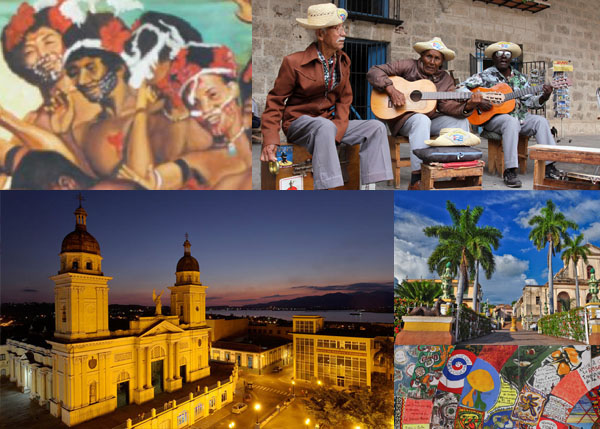10.7.7 Arsenio Rodríguez Set.

In 1940, Arsenio Rodríguez created his Conjunto, expanding his septet with three trumpets, a piano and a conga drum, known in the history of Cuban music as El Conjunto de Arsenio Rodríguez.
The group’s initial members were Miguelito Cuní Scull and Pedro Luis Sarrasent, as vocalists; Marcelino Guerra on guitar; another great, Lilí Martínez, on piano; Nilo Alfonso on double bass; Rubén Calzado; Benitín Bustillo; and one of the great trumpet players of Cuban son, Félix Chapotín. Minor percussion included Antonio Suárez on bongo drums and Israel Rodríguez on conga drums.
In the 1940s, Arsenio Rodríguez’s Conjunto was a huge hit with audiences who enjoyed good popular dance music on Sundays at the Jardines de La Tropical (Ave. 41, 44 and 46, Playa, Havana City) where they performed.
They performed musical genres from Cuban music, such as Son, Bolero, and Guaguancó. Their repertoire included songs such as “La Ruñidera,” “Nacer y morir,” “Dile a Catalina,” “Sandunguera,” “Bruca manigua,” “Seventy-two Jacheros pa’ un palo,” “Me siento solo,” “Soy kangá,” and “El Cerro tiene la llave.”
Arsenio’s Conjunto was the first musical group of its kind and is one of the most important Son Conjuntos in Cuban music, having given the genre a new image.
This group lasted for ten years, during which time it was also possible to enjoy Arsenio’s own compositions, which amazed those who listened to them.
Among the contributions of the Arsenio Rodríguez Ensemble to 20th-century Cuban music, three stand out. It created a new style of playing the tres, distinct from that of the Son sextets and septets of the time. It provided the harmonies created by the piano and the tres; harmonic figures enriched this aspect, as did the arpeggios and “tumbaos.” The trumpet played by Félix Chappottín, whose distinctly Cuban improvisations are particularly noteworthy. The Arsenio Rodríguez Ensemble marked the beginning of the evolution of Son.








